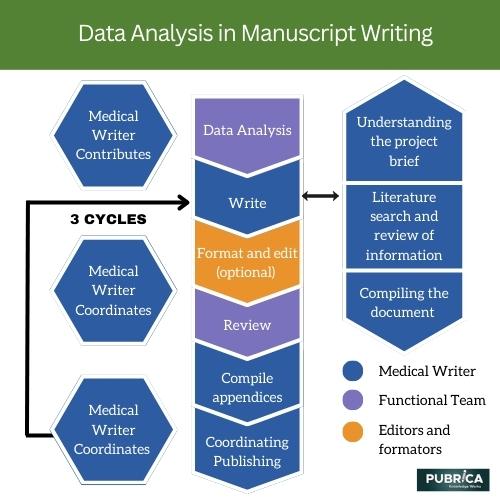Interpreting Results: The Role of Data Analysis in Manuscript Writing
Data analysis plays a pivotal role in the manuscript writing process, particularly in interpreting the results obtained from research studies. During this stage, researchers delve deep into the collected data, uncover patterns, identify trends, and draw meaningful conclusions. The interpretation of results is crucial as it allows researchers to provide valuable insights and support their hypotheses or research questions

- First and foremost, data analysis enables researchers to organize and make sense of the vast amount of information collected during the study. By employing statistical techniques, researchers can identify significant relationships between variables, determine the strength of associations, and quantify the impact of specific factors. This process helps establish the findings’ validity and reliability, adding credibility to the research.
- Furthermore, data analysis allows researchers to explore unexpected or contradictory results that may have emerged during the study. By critically examining the data, researchers can identify potential confounding variables or alternative explanations that may have influenced the outcomes. This exploration fosters a deeper understanding of the research phenomena and helps researchers refine their hypotheses or develop new research avenues.
- In addition, data analysis plays a crucial role in manuscript writing by enabling researchers to communicate their findings effectively. Through the use of visual representations, such as graphs, charts, and tables, researchers can present complex data concisely and understandably. This enhances the clarity and readability of the Manuscript, facilitating the dissemination of research findings to a broader audience.
- Moreover, data analysis serves as a basis for a manuscript’s discussion and interpretation sections. By interpreting the results in light of existing literature, researchers can provide explanations, implications, and potential applications of their findings. This critical analysis adds value to the research and contributes to the broader scientific knowledge base.
In conclusion, data analysis is integral to manuscript writing, enabling researchers to interpret their results, draw conclusions, and communicate their findings effectively. By employing statistical techniques, exploring unexpected results, and critically analyzing the data, researchers can provide valuable insights and contribute to the advancement of knowledge in their respective fields.
References
Labani, Satyanarayana, Komal Wadhwa, and Smita Asthana. “Basic Approach to Data Analysis and Writing of Results and Discussion Sections.” MAMC Journal of Medical Sciences 3.1 (2017): 6.
